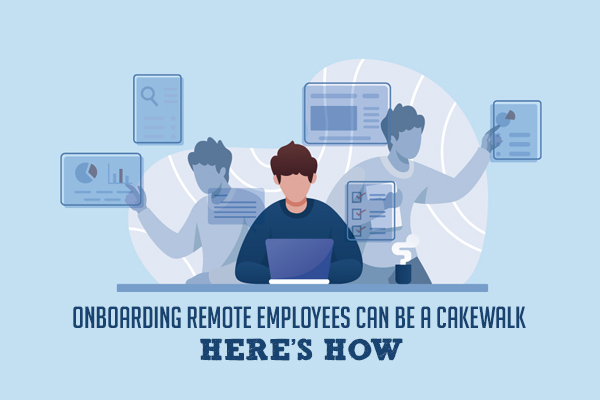Onboarding has never been a cakewalk. With remote working as a corporate arrangement, challenges only seem to get more tough.
There are plenty of factors that require immediate attention when it comes to getting new employees on board. Making them feel welcomed and helping them get ready for performing on the job being the two of the most important of them.
Onboarding remote employees can quickly become a tiresome process. After all, it is not just paperwork. Your new employees are required to connect with their teammates and other important personalities of your workplace, they are needed to sort their documentation online, and learn about their role as well as the organization, all over the span of a few days.
It is best for managers to have their checklist ready beforehand. This way, they can save some time and ensure that everything is organized.
Here are a few pointers that you should keep in mind to make onboarding easier for you and your workers both.
Adopt an LMS
Many are under an impression that investing in a learning management system is an expensive affair. However, what many miss out on is the fact that it is perhaps a cost-effective tool to invest in.
A learning management system or an LMS is a cloud-based online platform that allows managers to create and deploy training sessions.
These tools also allow managers to track the performance of their employees. When they can track how their employees are performing, it becomes easier for them to offer feedback and get the changes done in the course of action, if any.
There are also plenty of other features that make LMS a great tool for deploying onboarding training to employees. Take Inquisiq, for an instance. Some of the prominent Inquisiq features include leaderboards, points, certification systems, personalized views, and grading systems, which make it a power-packed tool for many.
All you need is your list of required features to making exploring and choosing your LMS easy.
Set clear milestones and plan
Setting clear milestones, goals, and objectives is a great practice for every aspect, including training. When you know where you want to reach, you will have a clear direction and thus, a clear plan.
You can set out to create a well-structured and well-detailed plan for your new employees. You can use this structure as a KPI to measure how your employees are doing.
You can consider setting timelines for a few tasks. It will enable new employees to remain productive even as they get a hang of how things work at your organization.
Onboard employees in groups
Onboarding in itself is an extremely time-consuming task. Now, imagine going over it every time you hire a new employee.
Hence, you can consider hosting onboarding training sessions for group’s altogether. It will be less stressful for managers and employees. This is because when employees learn about other fellow new hires, they tend to bond with them and it makes them feel less intimidated as all the eyes are not just on them then.
This is specifically helpful for employees who are being on boarded remotely. They won’t have a chance to meet teammates in person. When they connect with someone on the first day of the job itself, the chances of them feeling isolated reduces.
If you don’t have a group of employees joining, you can consider inviting the employees who have recently joined to be a part of the sessions.
Conclusion
Onboarding is often seen as an overwhelming procedure for both employees and employers. With plenty of digital tools now in the market and various practices that corporates are now using, onboarding has certainly become less of a hassle.

